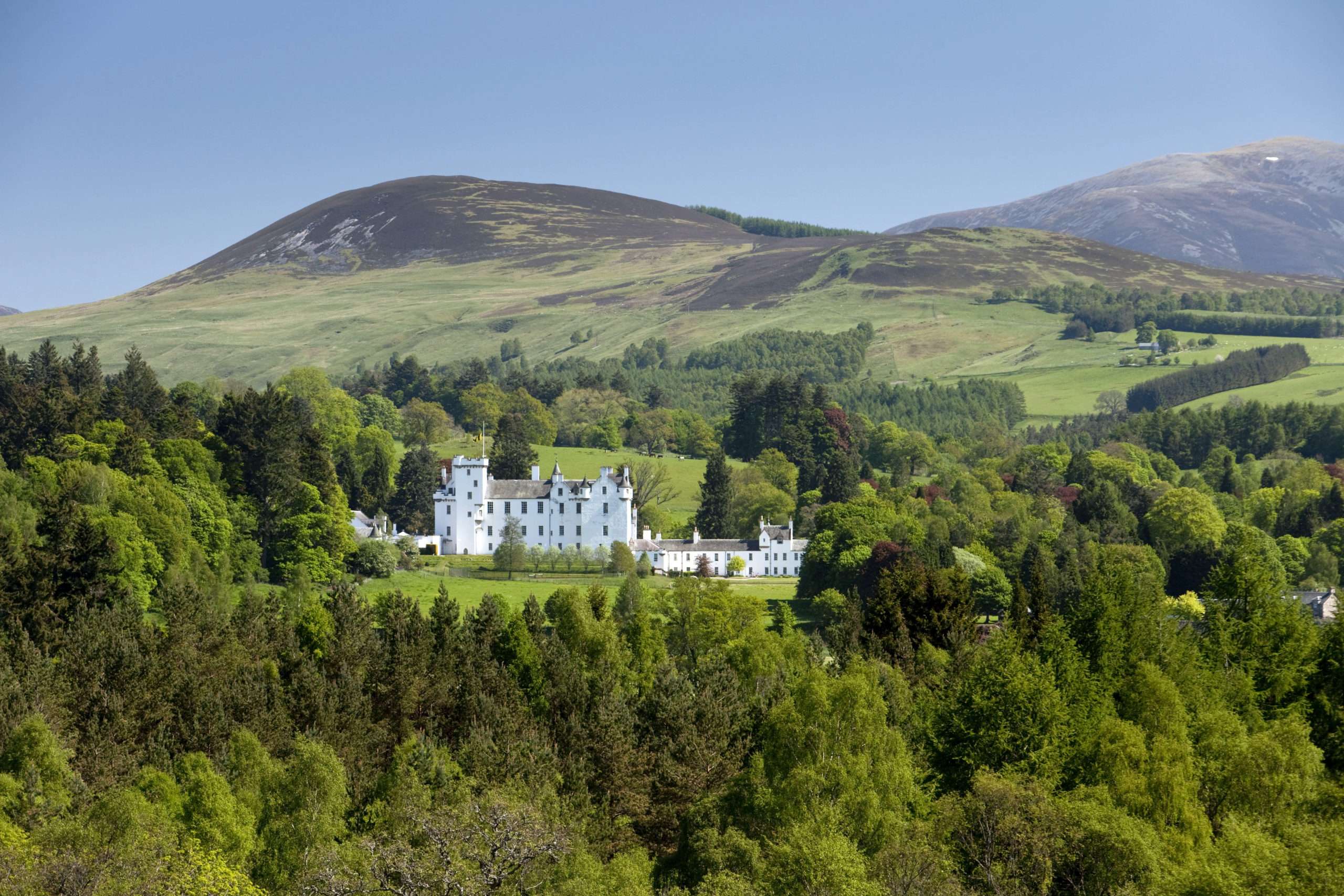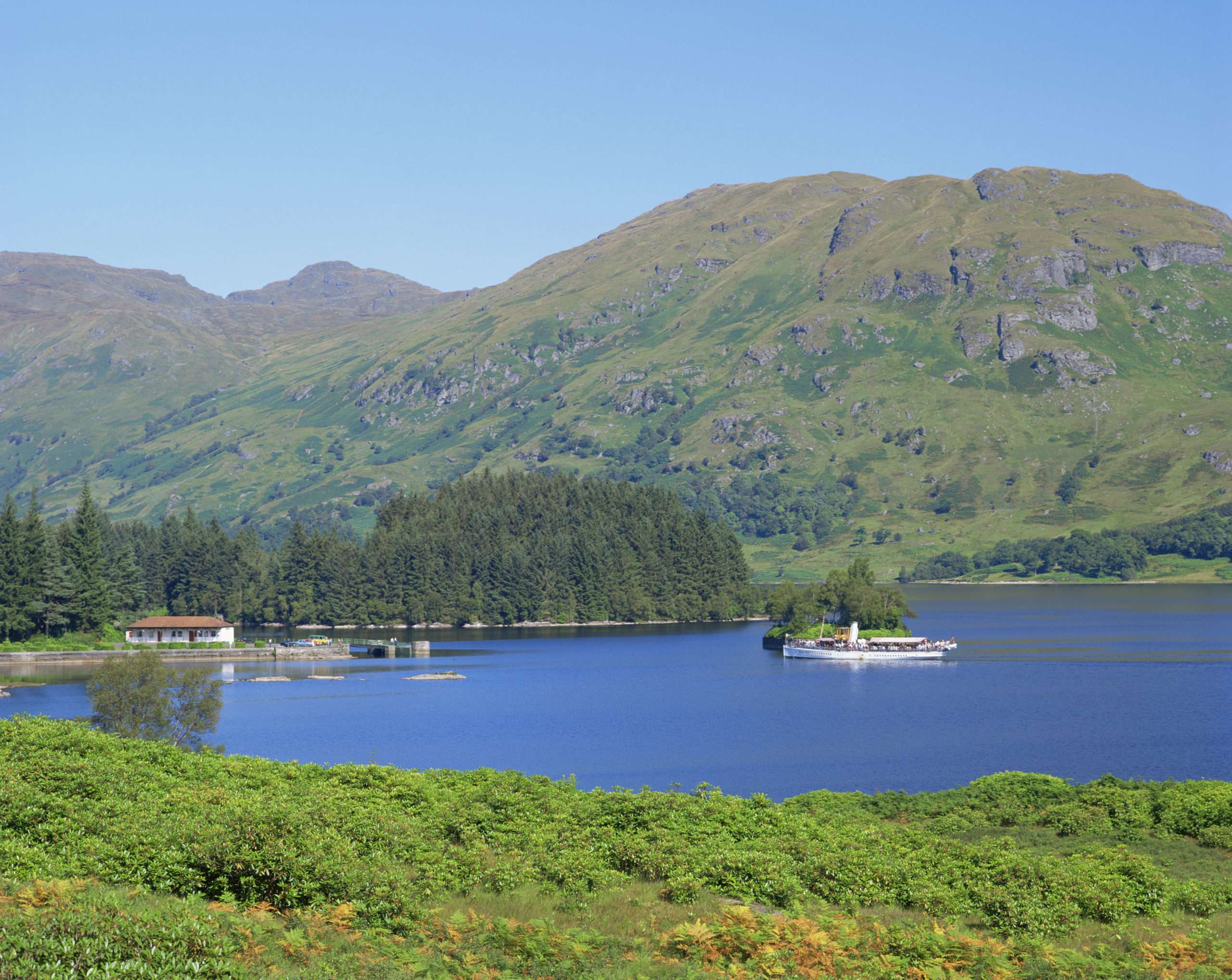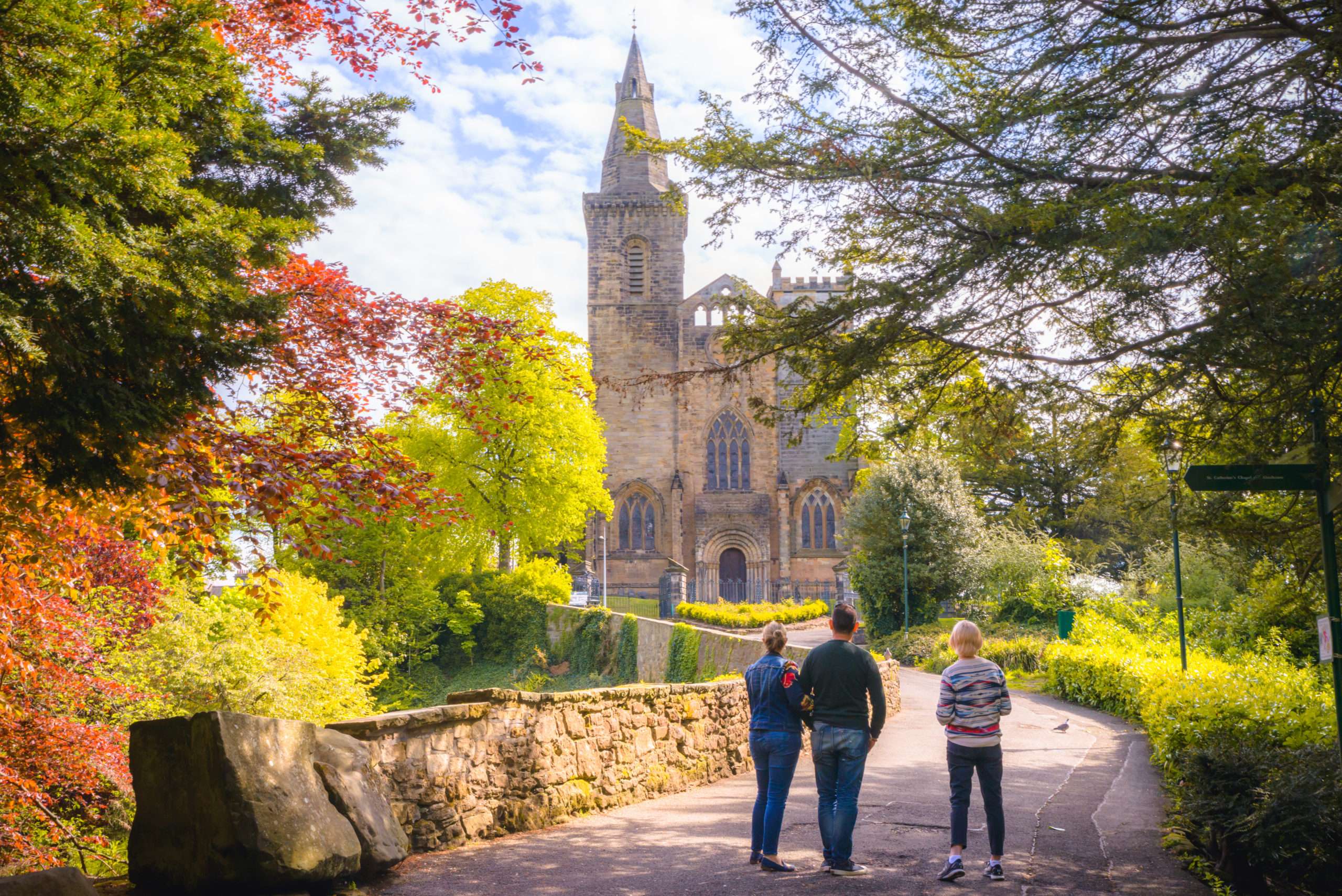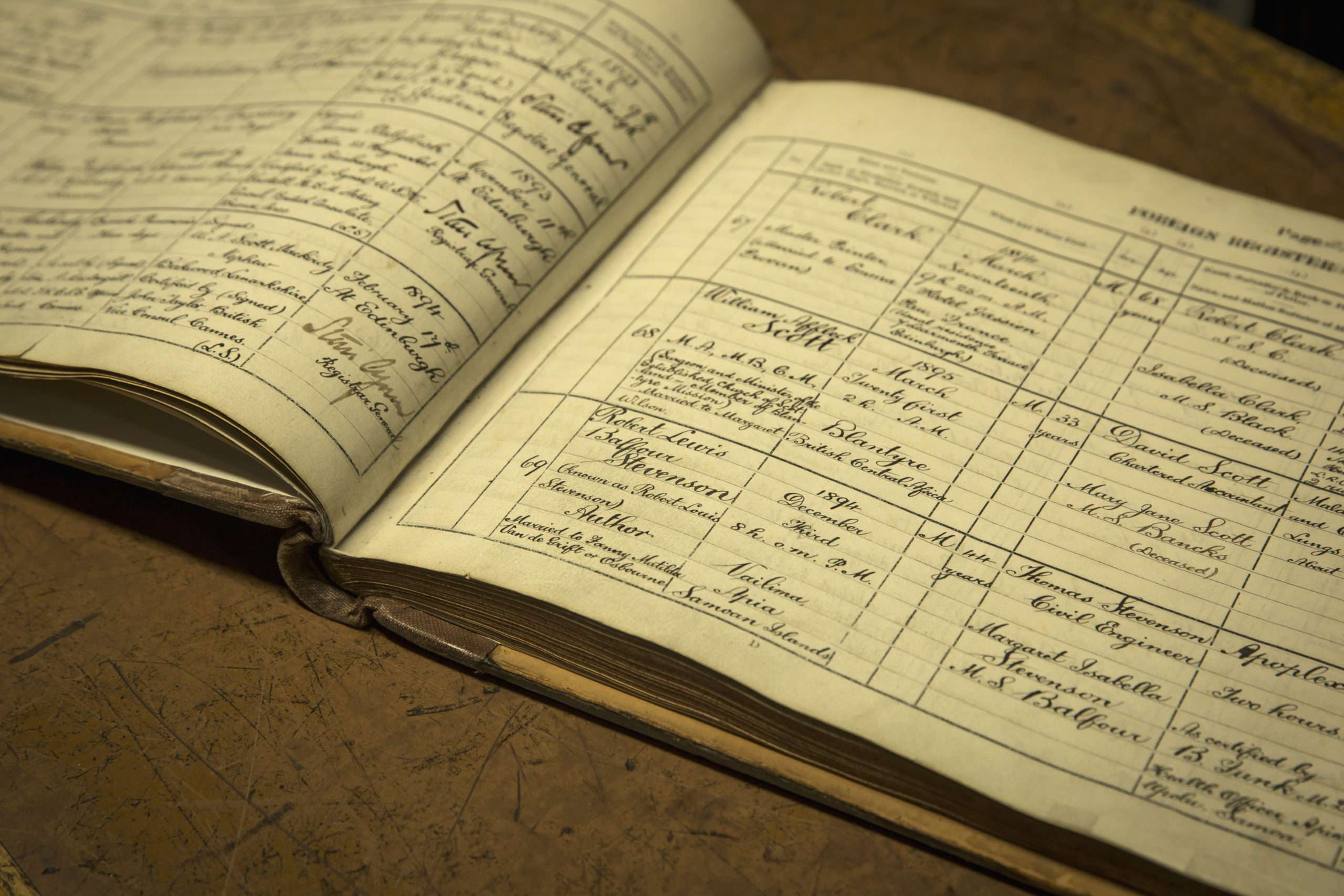An estimated 40 million people across the globe claim Scottish ancestry, many of whom come together to celebrate their shared Scottish heritage, including around St Andrew’s Day and Burns Night. There’s no better way, though, to feel truly connected with your Scottish roots than visiting Scotland. The Scottish Banner teamed up with VisitScotland to take a look at just some of the experiences ancestral visitors to Scotland can enjoy.
Connecting with Clan/Family names

A distinct element of Scottish history is that from the Highlands to the Lowlands there are sites and regions which are specifically associated to particular clan and family surnames. Scotland is famous around the world for its castles and historic properties, and many have clan/family links.
Some are atmospheric ruins, such as Dunnottar Castle, near Stonehaven, Aberdeenshire (Keith), the moated, triangular shaped Caerlaverock Castle near Dumfries (Maxwell), or Dundonald Castle, Kilmarnock (links to Stuart, Wallace and Bruce families). Others are well preserved homes with stunning interiors, such as Blair Castle in Perthshire (Murray), Culzean Castle in Ayrshire (Kennedy) and the Castle of Mey in Caithness (Sinclair). These examples also offer well-appointed self-catering accommodation in the castle grounds or neighbouring estates.
Those with Stuart (Stewart) ancestry are spoiled for choice, since there are places across Scotland associated with the Stuart monarchs, such as Edinburgh and Stirling Castles, and the stunning Mount Stuart on the Isle of Bute.
There are a number of dedicated clan history museums where you can explore the stories of a clan in more depth, such as the Clan MacPherson Museum, Newtonmore, the Clan Donnachaidh Museum (Robertson, Duncan and Reid) adjacent to House of Bruar in Pitlochy, Perthshire, and the Clan Cameron Museum in Spean Bridge, north of Fort William.
Scotland is globally famous for its stunning scenery and simply by visiting the areas associated with your clan and family names, you will enjoy the beauty of areas largely unchanged from what your ancestors would have known, such as Argyll (Campbell) and the North West Highlands (MacLennan). There are also many wonderful local museums telling the story of the area and those who lived there through the generations. The northern isles of Orkney and Shetland are generally accepted to have operated outwith the clan/family model. However, those with Orkney or Shetland ancestry will find a wealth of history waiting to be discovered, including these islands’ strong Viking heritage, at places such as Shetland Museum & Archives, and the Stromness Museum on the Orkney mainland, which is home to a rich source of information on the connections between Orkney and the Hudson’s Bay Company in Canada.
Famous faces

Many ancestral visitors wish to explore sites related to famous Scots. The story of Braveheart hero Sir William Wallace is told at the National Wallace Monument overlooking the site of his famous victory 1297 victory at the Battle of Stirling Bridge. The nearby Battle of Bannockburn experience puts you at the heart of King Robert the Bruce’s famous victory in 1314. You can also visit his burial place at Dunfermline Abbey in Fife, and Melrose Abbey in the Scottish Borders where his heart is interred.
Places linked to Scotland’s national bard Robert Burns including the Robert Burns Birthplace Museum in Alloway, Ayrshire, The Globe Inn in Dumfries where you can arrange to visit the rooms where he lived and worked, and The Writers Museum in Edinburgh which celebrates the lives of three giants of Scottish Literature – Burns, Robert Louis Stevenson and Sir Walter Scott. Scott’s beautiful home, Abbotsford, in the Scottish Borders, gives a fascinating insight into the life of the great author. The steamship SS Sir Walter Scott which bears his name offers scenic tours of Loch Katrine in the stunning Trossachs area, which was home to the famous folk hero Rob Roy MacGregor.
There are also many places across Scotland associated to Prince Charles Edward Stuart, known as Bonnie Prince Charlie, and perhaps none more so than Culloden near Inverness, which offers a powerfully emotive interpretation of how the 1745 Jacobite Rising came to a tragic end. Cairns across the battlefield bear the names of the clans who fought bravely for the Jacobite cause.
How Your Ancestors Lived

A number of attractions in Scotland provide fascinating insights into how your ancestors lived throughout the generations. Auchindrain Historic Township near Inveraray, Argyll and the Highland Folk Museum in Newtonmore are both fascinating open air museums capturing life in rural Scotland. The Scottish Fisheries Museum in Anstruther, Fife tells the story of the fishing industry from earliest times to the present, while Aberdeen Maritime Museum explores the city’s relationship with the sea through collections on the shipbuilding, fishing and oil industries.
The story of Scottish military regiments can be explored at the National War Museum and the Royal Scots Regimental Museum at Edinburgh Castle, The Highlanders’ Museum at Fort George near Inverness, the Gordon Highlanders Museum in Aberdeen, the Black Watch Castle and Museum in Perth, and the Argyll and Sutherland Highlanders Museum at Stirling Castle
During the 19th century, domestic service was the biggest single employer for women and the second largest employer of all workers. Attractions such as Georgian House in Edinburgh, the House of Dun near Montrose in Angus, and Traquair House in the Scottish Borders are some examples of the places where you can experience what live was like ‘below stairs’. Textile production was and continues to be an important industry in Scotland. Exhibitions on the history of this industry can be enjoyed at the Weavers Cottage in Kilbarchan, Renfrewshire, Verdant Works in Dundee, New Lanark World Heritage Site, and Borders Textile Towerhouse in Hawick. Visit The Harris Tweed® Story Room at Stornoway Town Hall in the Outer Hebrides to explore the history of this iconic cloth, while www.harristweed.org/trail details places where you can see it being woven.
Genealogy

Scotland is acknowledged to have some of the world’s finest archive records, and for those looking to build their family tree, there are various resources available.
At ScotlandsPeople Centre in Edinburgh – part of National Records of Scotland – you can book space to explore the extensive archives. Other larger family history hubs are the Burns Monument Centre in Kilmarnock, Clackmannanshire Family History Centre in Alloa, Heritage Hub in Hawick, Highland Archive Service Family History Centre in Inverness, and the Family History at the Mitchell Library, Glasgow.
There are other small family history centres around Scotland which can be most helpful in uncovering local records, but many of these are largely volunteer-run, so it’s advisable to research these beforehand, and book an appointment as far in advance as possible of your planned visit.
The expert help of professional genealogists can be invaluable, and by going to visitscotland.com and searching ‘genealogists’, you will find a range of providers who have experience in helping those with Scottish ancestry uncover their roots.
There are also a number of tour operators in Scotland who can assist with helping you trace your Scottish roots and design your perfect tour around your findings, or even simply develop an itinerary around the clan/family names within your family story. These include Mary’s Meanders, Scottish Clans and Castles, Robbies Mac Tours and Kilted Piper Tours.
These are just a few ideas to inspire your ancestral experience in Scotland, but you’ll find a wealth of further information at www.visitscotland.com/ancestry
Main photo: The Clan Fraser gravestone at Culloden Battlefield. Photo: VisitScotland/Kenny Lam.

